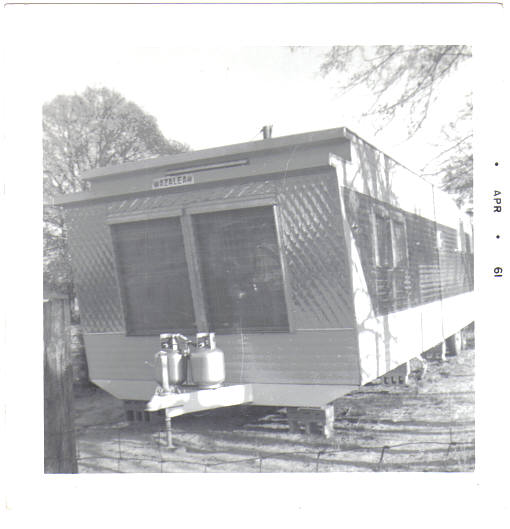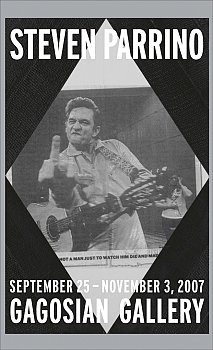Schwarz
View current page
...more recent posts
model No. 300 lionel hell gate bridge in box
richard lloyd q and a
michigan in pictures
via justin's materialicous
Comes in black steel and measures 41” high, 34” wide, and 21” deep. Available with a short table that has a small shelf under the door or with a long table that has a bench, so you can sit comfortably close to the fire. Choose either a left or right side loading door and top or back vent. The Shaker is made in Germany and designed by Antonio Citterio with Toan Nguyen. It is the winner of the prestigious reddot design award and the Chicago Museum of Architecture and Design Good Design award for 2006.
The New York Percussion Ensemble - Bach For Percussion (mp3s)
MP3:
1. Fugue in G Minor-The Great (4:13)
2. Toccata in F Major (5:57)
3. Fugue in C Major (3:43)
Discovering this album in a thrift-store was one of the most startling experiences of my record-hunting life. Hearing good ol' Johann Sebastian performed on the likes of snare drums, woodblocks and tom-toms had me completely bewildered. The New York Percussion Ensemble didn't cheat by using melodic percussion instruments like xylophones or marimbas - the list of instruments on the back include, apart from the ones I just mentioned, tambourines, cymbals, maracas, castanets, bongos, claves, triangle, cowbell, tympani, boobams, and sleigh bells.
The sound lies closer to traditional African music then to classical. To quote a Time magazine review: "The result has the effect of an X-ray photograph of a flower — barely recognizable, eerie and oddly fascinating." We make available three of the album's four cuts - the first track, a version of "Toccata and Fugue in D Minor," had a nasty gouge in it, but don't worry, it wasn't as good as the other three tracks.
This was no joke. Arranger John Klein's credits on the back cover are extensive - an early classical training, numerous classical and pop credits, and authorship of a "monumental two-volume work entitled 'The First Four Centuries of Music.'" I have no idea what this means, though: "Mr. Klein has composed music for no less then 137 dramas for the United States Treasury Department NBC Transcription Series..."
Passages from Finnegans Wake - Side One (27:13)
Passages from Finnegans Wake - Side Two (25:08)
You See Me Laughin' : Last of the Hill Country Bluesmen
In this day and age of media overload, it's astonishing that the wilds of America can still conceal vital, outstanding music that remains unrecorded and largely unheard. But Matthew Johnson, a skinny white boy from Mississippi, found a heap in his own backyard. In the early '90s, turned on to blues by a University of Mississippi class taught by rock critic and historian Robert Palmer, Johnson was inspired to seek out nearby elderly blues guitarists. Though he flunked the class, the young future label mogul went on to meet and record R.L. Burnside (a former cohort of Mississippi Fred McDowell), Junior Kimbrough (a local juke-joint owner, superb guitar player, and father of 28 children), Cedell Davis (a crippled but resolute guitarist), and T-Model Ford (an illiterate former convict who picked up his first guitar at age 58).
The airwaves in the United States are supposedly owned by the American people, and licensed out to broadcasters for use, but in practice, that's not the way it works at all. In practice, the airwaves are owned by Clear Channel, and they work hand-in-hand with the big four record labels to limit our choice of music. It's a great scam they've got going, and it's been a very profitable system for all of them for a very long time.
For the rest of us, though, this system sucks. For guys like me who can't stand top 40 music, who can't stand the utter crap they play on KROQ these days, and who want some fucking variety in their music, we're screwed . . .
. . .with the notable exception of Internet radio, where we have choices as diverse as Radio Paradise, WFMU, Groove Salad, and Indie Pop Rocks.
johns new table (after nakashima)
Boxer’s trip, her second in many years, was especially important, Nelson said, because the national park had been recently taken off a United Nations environmental “danger” list, something that concerned Florida’s senior senator.
Nelson plans to hold a congressional hearing today to find out why the Everglades was taken off the list when he says the health of the park has been deteriorating for years. The national park had been on the U.N.’s World Heritage Committee list since 1993, after Hurricane Andrew caused immense water pollution and other damage.
Simply, Nelson blames the Bush administration, which has been “unrelenting in its efforts to downplay the importance of the Everglades,” he said. Most recently, the White House has threatened to veto the Water Resources Development Act, a bill that is six years overdue and contains approximately $2 billion in Everglades funding.
clearview
On America’s earliest highways, road signs were hand-painted on wood. When interstate highways became standardized, so did the typeface. But in all sorts of conditions it still looks fuzzy. Graphic designer Don Meeker helped bring highway signage back into focus.
roadside architecture
via lisa
geostationary banana over texas
via mr bc
The East Village has been dragged up-market, but isn’t going without a fight. The photographer and videographer Clayton Patterson has documented the changes since he came here from Calgary, Alberta, in 1979. Mr. Patterson, also the editor of “Resistance,” a sprawling collection of essays on the contentious politics of East Village real estate, recently took me on a tour.
The architect Andrew Geller gazed up at the beach house's soaring glass windows, the walls that angle inward, the catwalk jutting toward the ocean, and marveled.
"I'll be damned, it's still here," he says.
Geller, now 83, had gained fame in the '50s and '60s for small and startling modern beach houses that set cubes on edge, angles atilt and conventions aside. Now, on the day after Labor Day with a sky as blue and bright as anyone visiting a beach house could wish for, he had come to visit this house built on a high sandy hill in the Pines on Fire Island in 1961. Known as the Frank House, it had just undergone a three-year renovation by its current owner, Philip Monaghan, 52, working with architect Rodman Paul, who restored it to its original form.
steve parrino is in the midst of a big posthmous comeback
"the black mark", Palate of Tokyo, 13, avenue of President Wilson, 75116 Paris, 01 47 23 54 01, www.palaisdetokyo.com, of May 24 at August 26
III: Steven Parrino, 13 Shatterd Panels for Joey Cleans, 2001, panels of placoplâtre, Collection Parrino Family, Courtesy Gagosian Gallery, New York
nickas discusses the situation in the september issue of artforum
Britons and the Irish can still down a pint of beer, walk a mile, covet an ounce of gold and eat a pound of bananas after the European Union ruled today that the countries could retain measurements dating back to the Middle Ages.
Under a previous European Union plan, Britain and Ireland would have been forced to adopt the metric system and phase out imperial measurements by 2009. But after a vociferous antimetric campaign by British skeptics and London’s tabloid press, European Union officials decided that an ounce of common sense (or 28.3 grams) suggested that granting a reprieve was better than braving a public backlash.

In 1950, at 83, Frank Lloyd Wright designed a house for a private island on Lake Mahopac, about 50 miles north of New York City. He dreamed it might surpass Fallingwater, his 1935 masterpiece—but then the client ran short of funds, and the house was shelved for almost 50 years. Now, after eight years of planning and construction, the house is finally complete—5,000 spectacular square feet of mahogany, lake stone, hand-troweled cement, and triangular skylights.
But no house, least of all a posthumous construction from the twentieth century’s most famous architect, is an island, and this one has become a particularly hot piece of intellectual real estate. There are those who celebrate its realization: It’s used in the packaging of the Apple-based architecture software that helped bring the design to life and is the subject of an upcoming PBS documentary. And there are its haters: architects, scholars, and amateurs who say it’s not Wright’s real vision—the stones jut too much, the skylights should be flat, not domed, and so on. As it stands, the house is officially unofficial. The Frank Lloyd Wright Foundation’s chief executive officer, Philip Allsopp, states bluntly, “It’s not a Frank Lloyd Wright house, because it hasn’t been certified by the foundation.”
"quiet" night
35 years of construction in 10 seconds
via vz
For the last three years a team of engineers, conservators and architects has been studying the guts of the Guggenheim, mapping out a thorough but respectful renovation of Frank Lloyd Wright’s spiraling building on Fifth Avenue, completed in 1959. Although it was clearly in serious need of renewal, with cracks in its facade, a decaying sidewalk and outdated mechanical systems, experts wanted to make a comprehensive diagnosis before determining the best course of treatment.
Yesterday at the flea market I picked up a small cosmetics case stuffed with photos almost all of which were of the same woman. The bulk of the photos were photobooths and portraits documenting her as she aged over the course of about 50 years or so. I'll probably eventually put them all up over at Square America but until then here's a bunch- the dates where available are underneath each photo. Given the date of the first photo I figure she was born in late 1937 or early 1938. The last photo dates from the early 90s so she's somewhere in her early-to-mid 50s there.via mr bc
hill country
via adman




